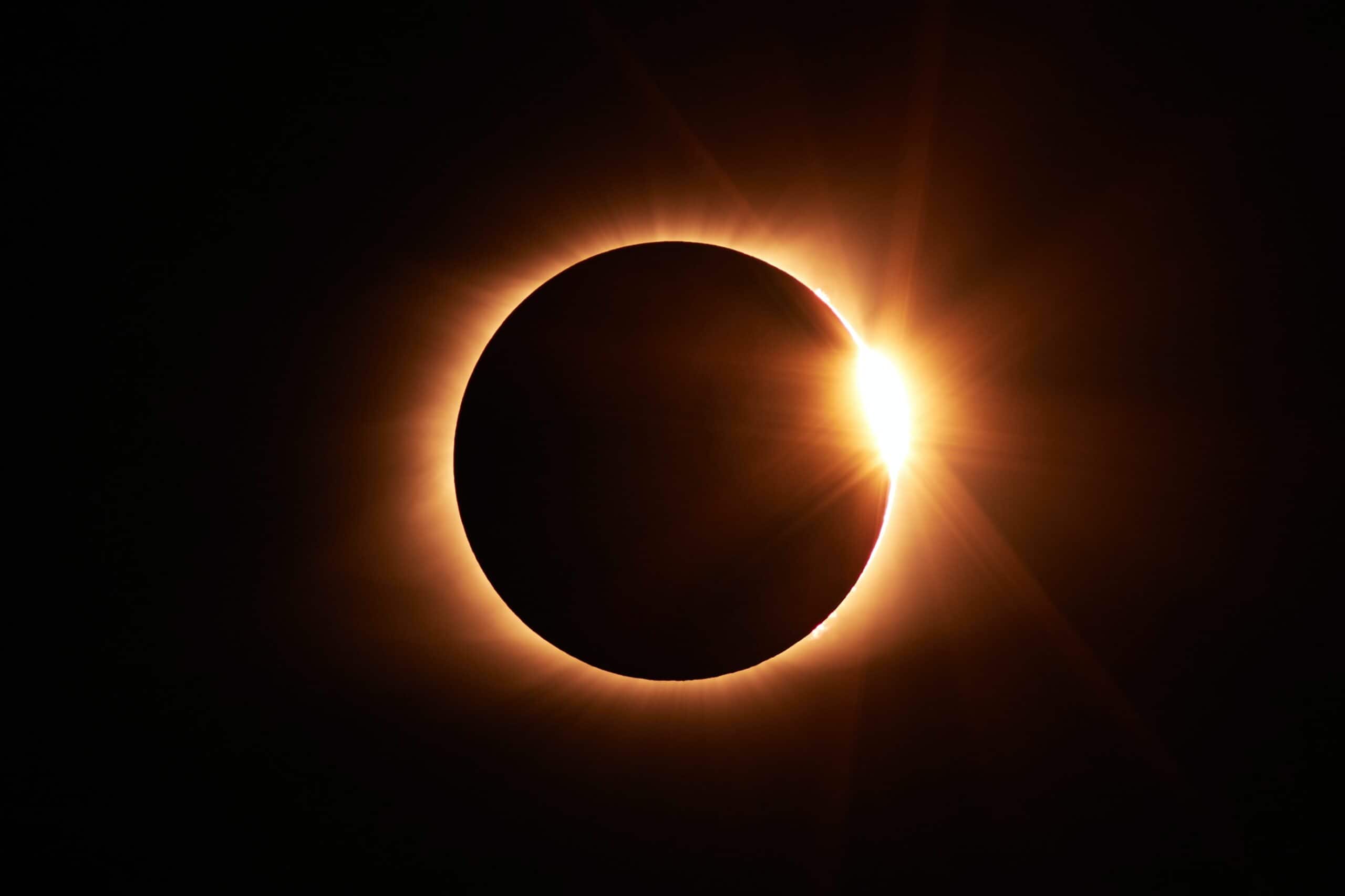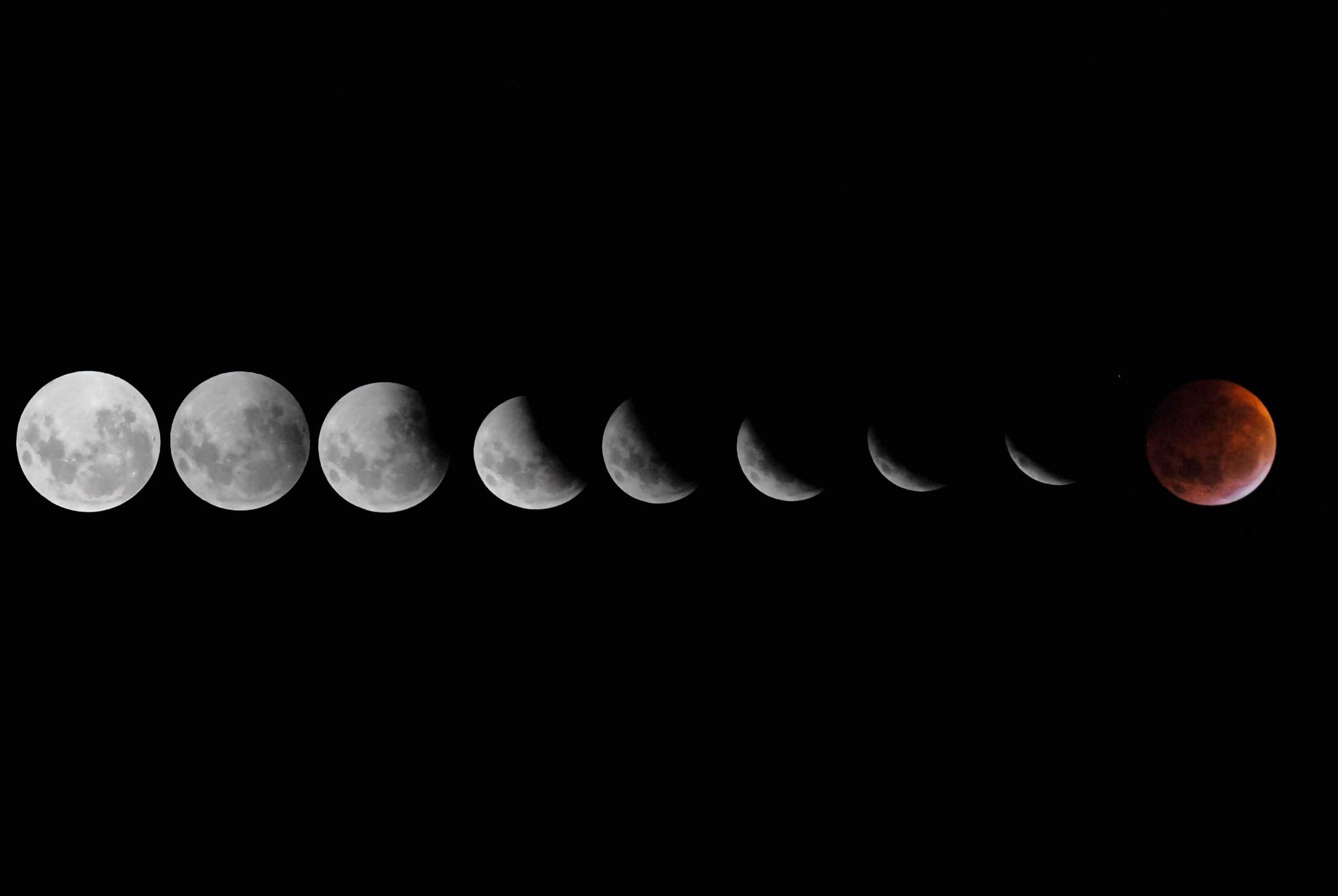Contents
Who Doesn’t Love An Eclipse?
Solar and lunar eclipses are spectacular celestial events that have enthralled and captivated viewers for millennia. Occurring in cycles, these two types of eclipses are mesmerizing to behold and often require travel to truly appreciate. This article will explore the nuances of solar and lunar eclipses, their causes and appearances, as well as how to see them.
How Many Eclipses are There in 2023?
In a given year, depending on the circumstances, we can see up to a combined seven solar eclipses and lunar eclipses. This year, however, we will only get to see four eclipses: two solar eclipses and two partial lunar eclipses.
Why Do Eclipses Happen?
Solar Eclipses
To put it simply, solar eclipses occur when the Moon passes between the Sun and Earth, blocking out most of the sunlight and casting a shadow on Earth. In order for an eclipse to happen, the Moon must be in the right position relative to the Sun and Earth. During a total solar eclipse, the Moon blocks the Sun’s light, leaving only a narrow sliver of the Sun’s light visible as a bright ring around the Moon, called the “corona.”
The Moon must be aligned in its orbit between the Sun and Earth in order to have a solar eclipse. This alignment is referred to as being “in syzygy” and occurs when the moon is at its new moon phase. The Moon’s orbit around the Earth is slightly tilted at 5 degrees from the ecliptic plane, which is the invisible plane that the Earth and other planets orbit the Sun in. When the moon is in this position, it casts a shadow on the Earth, resulting in a solar eclipse.
Because the moon is roughly the same angular size as the sun in the sky, it is able to completely block out the sun during the totality phase of a total eclipse. Since the moon’s orbit is an ellipse, however, sometimes its apparent size is slightly smaller than that of the disk of the sun, which creates an annular “ring of fire” solar eclipse.
The Moon’s orbital path during a solar eclipse. Image credit: National Solar Observatory
Lunar Eclipses
Lunar eclipses occur when Earth is positioned between the Sun and Moon, blocking out the sunlight and creating a shadow on the Moon. During a lunar eclipse, the Sun’s light is blocked by the Earth, and the Moon appears to be in the shadow of the Earth, making it appear dim and red. Lunar eclipses can only occur at full moon, meaning that the Moon must be completely illuminated by the Sun in order for an eclipse to occur. Along with that, the three celestial bodies must be in alignment, with the Earth, Moon, and the Sun on the ecliptic plane. This occurs when the Moon is at or near one of its two lunar nodes, where the Moon’s orbit intersects the ecliptic plane.
Image of the two nodes of the Moon’s orbit, where the sun’s path and the Moon’s path intersect.
When the objects are in perfect alignment on the ecliptic, a total lunar eclipse occurs. However, partial and penumbral lunar eclipses can occur instead following varying degrees of slight misalignment.
Will There Be a Solar Eclipse in 2023?
Yes, there will be two solar eclipses in 2023!
April 20th – Hybrid Solar Eclipse
On April 20th, 2023, there will be a hybrid solar eclipse visible over Southeast Asia and parts of Australia. A hybrid solar eclipse is a rare type of solar eclipse in which the eclipse changes between a total and an annular eclipse along its path. This happens because the distance between the Earth and the Moon can vary, so the angular size of the Moon in the sky can change. At some points along the path of the eclipse, the Moon will appear to be close enough to the Earth to completely cover the Sun’s disk, resulting in a total eclipse. But at other points along the path, the Moon will appear too small to completely cover the Sun, resulting in an annular eclipse or a “ring of fire.”
Hybrid solar eclipses are relatively rare, occurring only about once per decade. Because the eclipse changes between a total and annular, it can be spectacular to observe, and now is a great time to see it because another one will not occur until 2031.

October 14th – Annular Solar Eclipse
On October 14th, the American Southwest will get to experience the awesome “ring of fire” that past observers have described it as. The eclipse will be visible from a narrow path that passes through the Americas, including parts of Mexico, the United States, and many South American countries. In areas outside the path of annularity, where the eclipse will be visible as an annular eclipse, it can be seen as a partial eclipse from a wide span of locations.
The path of annularity will begin in the Pacific Northwest and move across the United States, passing through parts of Oregon, Nevada, Utah, New Mexico, and Texas before moving into the southern parts of Central America and northern South America.
Will There Be a Lunar Eclipse in 2023?
Yes, there will be two lunar eclipses in 2023!
May 5th – Penumbral Lunar Eclipse
On May 5th, people in Europe, Asia, Australia, and Africa will get to witness a penumbral lunar eclipse. This occurs when the Moon passes through Earth’s penumbral shadow but does not pass through the umbra. Because of this, the Moon will not have a red tint cast onto it, but rather, will be darkened slightly as it moves through the shadow.

October 28th – Partial Lunar Eclipse
Parts of Africa, Europe, Asia, Australia, and South America will get to experience a partial lunar eclipse on October 28th, 2023. Only 6% of the Moon will be obscured by Earth’s umbra during this event, as well as 100% obscured by the penumbra. During the eclipse, the moon will begin to darken significantly, but only a small portion of it will take on the well-known red tint of the umbra.
Best Places to See the 2023 Eclipses
April 20th Hybrid Solar Eclipse
The best places to see a solar eclipse are always within the path of totality (or annularity). For the April 20th hybrid eclipse, the path of totality will only be in a small sliver of northwest Australia, Timor-Leste, as well as eastern Indonesia.
Those in Australia can only see the totality from the Exmouth Peninsula in Western Australia. For anyone in Timor-Leste, totality will run through the east side of the nation over Luro and Lospalos. In Indonesia, it can be seen from a large portion of the Papua province.
May 5th Penumbral Lunar Eclipse
The best places to view this eclipse are anywhere in central or eastern Asia, as well as the entire continent of Australia. Since this is a lunar eclipse, there is no “path of totality” that is dependent on latitude, but rather, a wide slice of longitudes get to witness the event based on if the moon is above the horizon or not.
October 14th Annular Solar Eclipse
The October 14th annular eclipse covers a wide chunk of the Americas, allowing many individuals to get the chance to see it from the comfort of their own homes or by traveling to see it. Luckily for many of us here in the US, the path of annularity runs through many beautiful locations and national parks.
October 28th Partial Lunar Eclipse
The states that will get to see the full annular eclipse include Oregon, Nevada, Utah, New Mexico, and Texas. Many national and state parks generally offer eclipse glasses and host events for major solar eclipses such as these. Some major landmarks that the path of annularity will run through include Crater Lake National Park, Bryce Canyon National Park, Chaco Culture National Historical Park, and many others. It will also run through multiple major cities, such as Albuquerque, Santa Fe, and San Antonio.
For individuals living in central/east Africa, Europe, or central/west Asia, the entire lunar eclipse will be easily visible. The United States, Canada, South America, and Australia get to see only part of the eclipse or the penumbral stage this time around, unfortunately.
Don’t Miss A Single 2023 Eclipse, But Be Safe
Solar and lunar eclipses are fascinating phenomena that occur when the alignment of the Earth, Moon, and Sun is just right. Both types of eclipses are relatively rare and can be spectacular to observe. Still, it is important to do so safely by using certified eclipse glasses or other approved filters for telescopes and magnifying optical devices.

